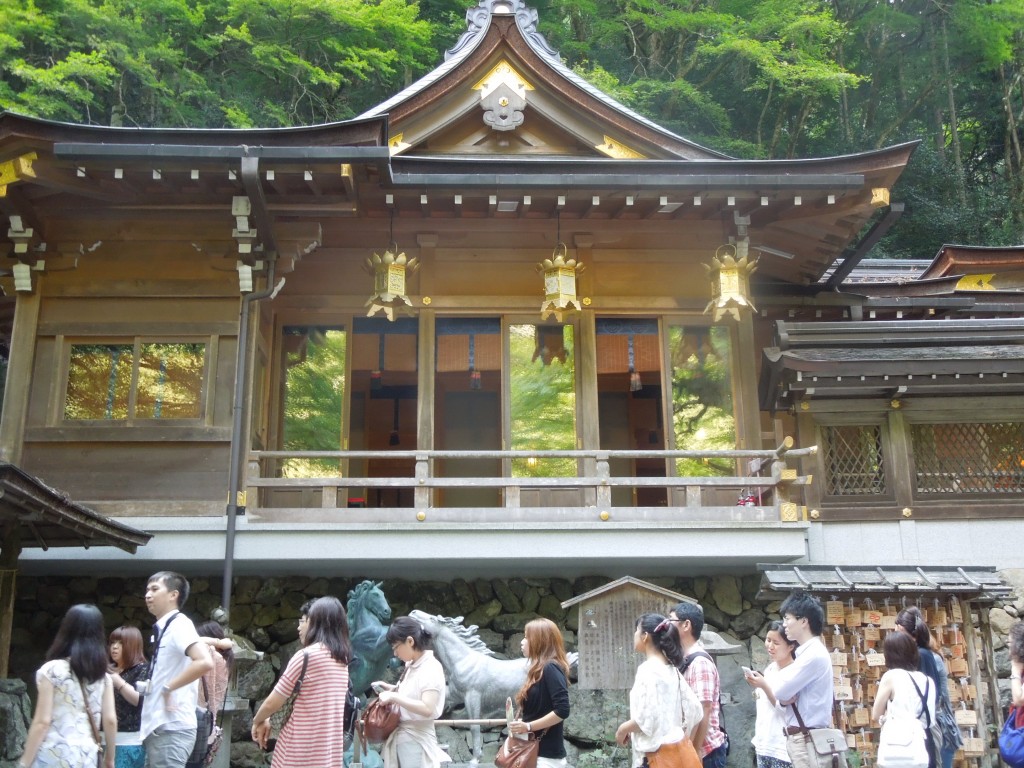
Lining up to pray: people queue before the sparkling new Worship Hall, complete with reflecting panels which heighten the effect of the abundance of greenery
From Kurama Temple, the path leads up to the top of the hill where there are a number of subshrines and an area of knotted tree roots. One of the subshrines (Mao-den) houses the meteorite on which the deity Mao-son descended to earth. Another one houses a sacred tree blasted by lightning, whose continuing vigor is seen as a striking example of the life-force.
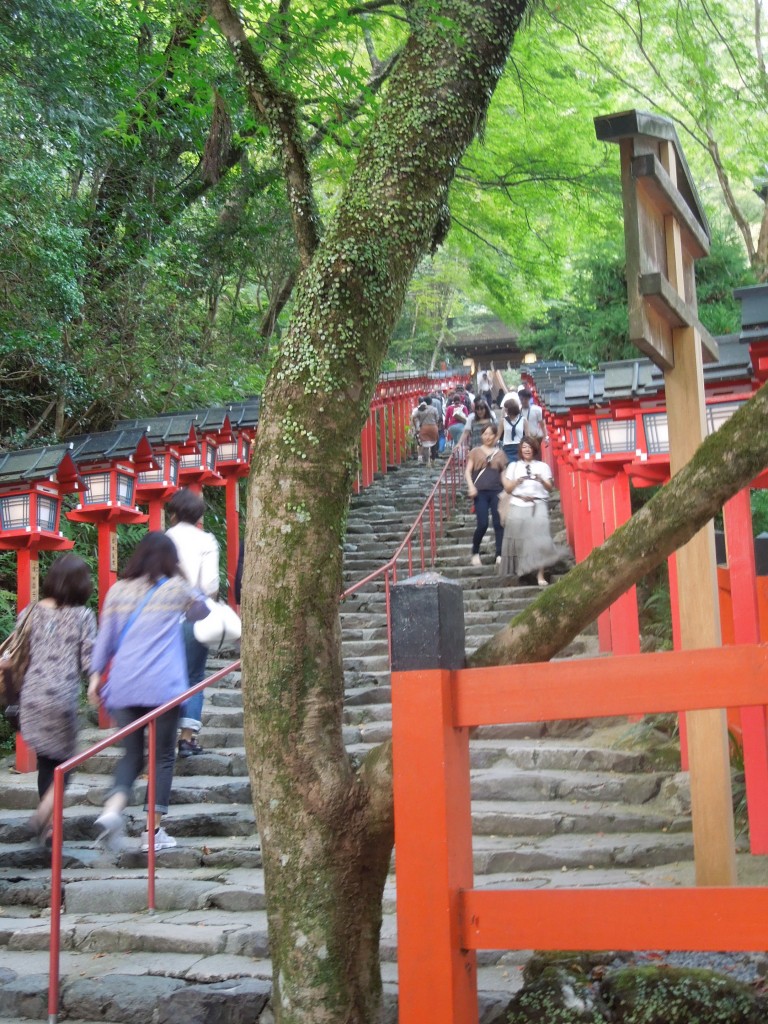
The 84 steps lined with lanterns leading up to Kifune Jinja
Descending into the town of Kibune, one soon comes across the long stone staircase lined with lanterns leading to Kifune Shrine (the shrine calls itself Kifune, though everyone refers to it as Kibune which is the name of the town). Shrine lore claims a foundation date in the fifth century, though it’s impossible to know for sure.
The founding myth has to do with a shamanic princess called Tamayorihime no mikoto (Spirit-Inviting Maiden), who sailed upstream in a yellow boat determined to find the source of the Kamo river. (The Chinese characters used to write the name of the shrine used to be Yellow Boat, but is now Precious Boat.) She stopped at a spring, the river source, and it’s said that her boat lies buried where the Okunoin shrine now stands.
Dedicated to the rain-god Takaokami no mikoto, the shrine has close connections with all matters to do with water. It was ranked among the top 16 imperial shrines in Heian times, and envoys were sent here whenever there was a drought or flooding. Amongst the offerings were black horses to bring rain, or white horses for clear weather.
The shrine’s watery connections are maintained by fortune papers which have to be floated on water in order to be read. Wherever one looks, there seems to be water cascading down from the hillside, and the sound of the river is ever-present.
Another element was added by the visit of the Heian poet, Izumi Shikibu, who visited Kifune to pray for reconciliation with her husband. It gave the shrine a reputation for promoting ‘good relationships’ (enmusubi). It seems that it also led to curses being put on failed lovers, for women would visit ‘at the hour of the ox’ (2 am) to nail a straw doll effigy to a tree. (See Jishu Shrine for more about this practice.)
The Haiden (Worship Hall) and Honden (Sanctuary) were renewed in 2005 and look resplendent in the sunshine. Both the main shrine and the Okunoin have a ‘rock-boat’ in reference to the founding myth (gods travel by rockboat, for spirit and rock are closely associated. (For more on this, click here.)
From the shrine it’s a 30-minute walk down to the small railway line, or one can take the shuttle bus if it’s running. Kibune is popular in summer months when busloads arrive for the popular – and expensive – meals served on platforms over the rapids (prices start at Y5500). The shrine might not rank as high these days as it did in Heian times, but it’s probably more popular than it’s ever been.
**************************************************************************************************************************************************************************
Information is drawn from Cali and Dougill’s Shinto Shrines, published this year by the University of Hawaii Press. For a previous blog entry on Kibune, click here.
***************************************************************************************************************************************************************************
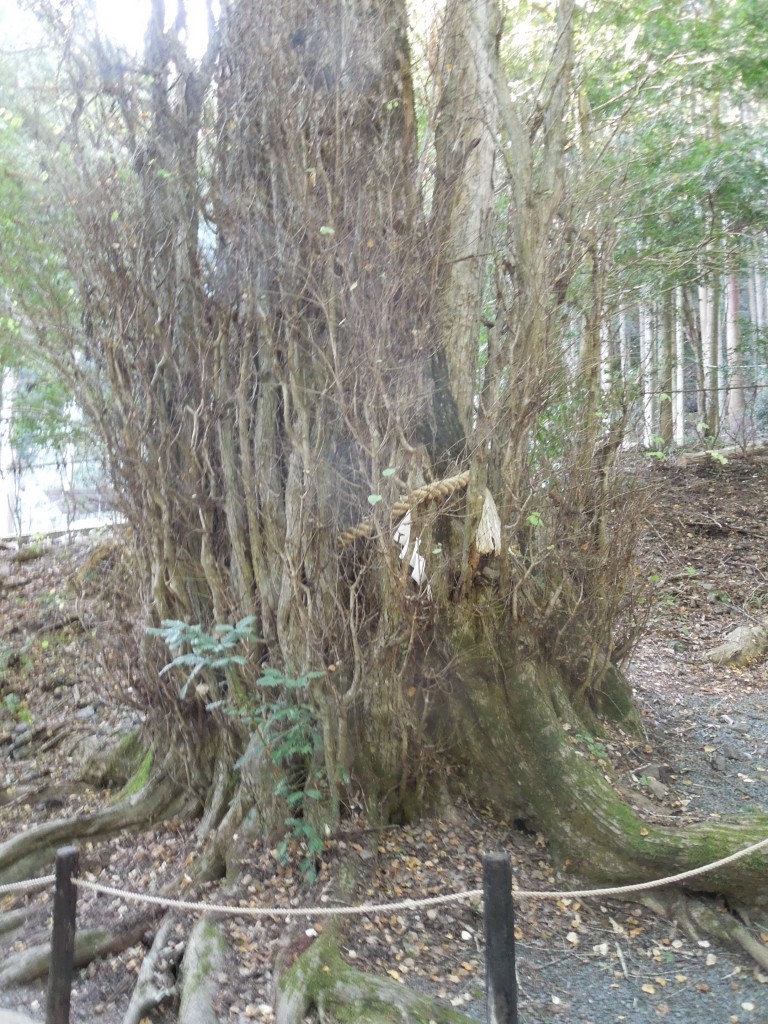
The shrine's most sacred tree is a Judas tree (katsura). It's said to symbolise the spirit of Shinto by the many branches reaching upwards to refresh themselves with the power of kami
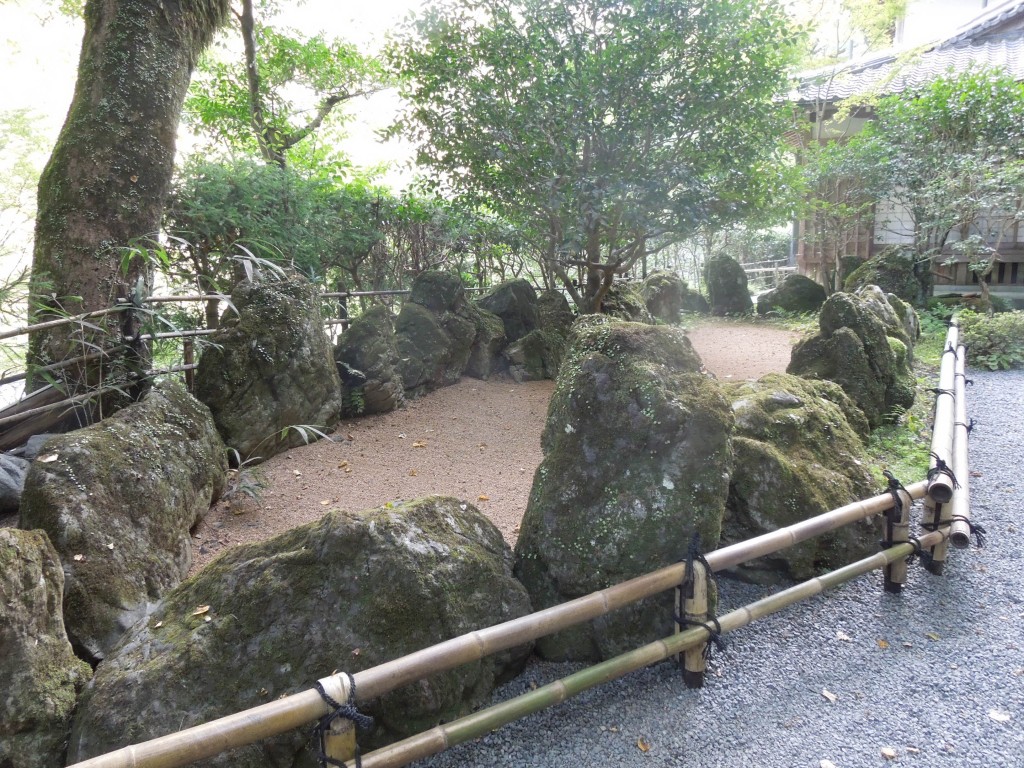
The rock boat at the main shrine, put up in the twentieth century to honour the founding myth
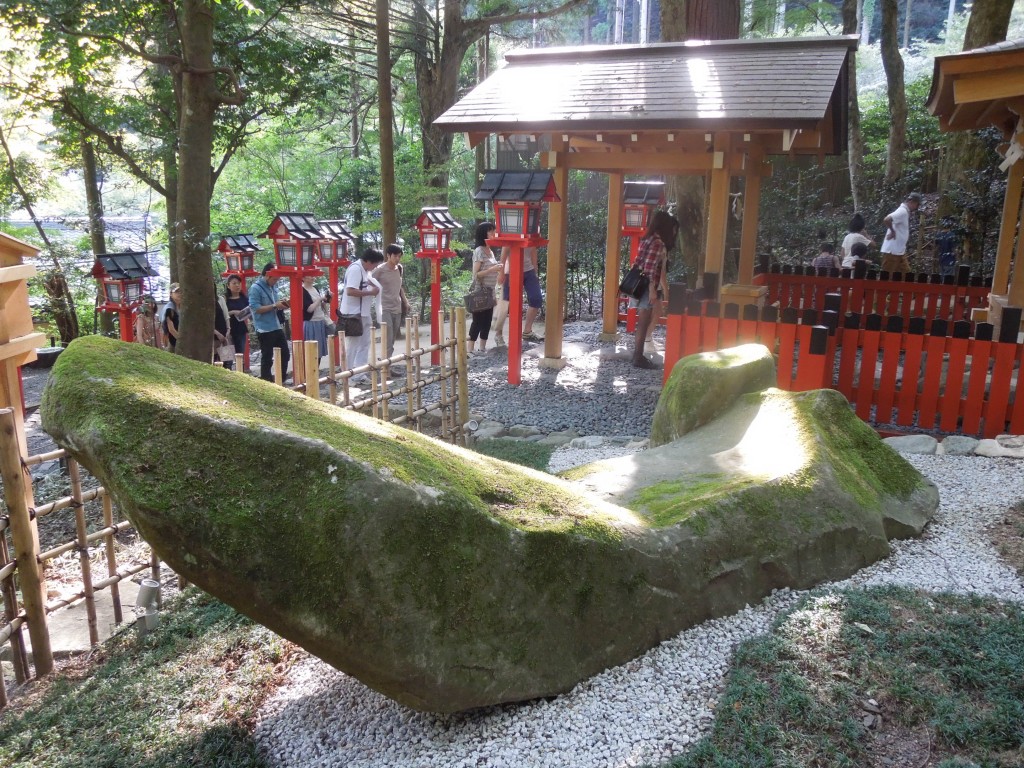
Rock boat at the Okunoin shrine, which was donated by a local gardener in recent times
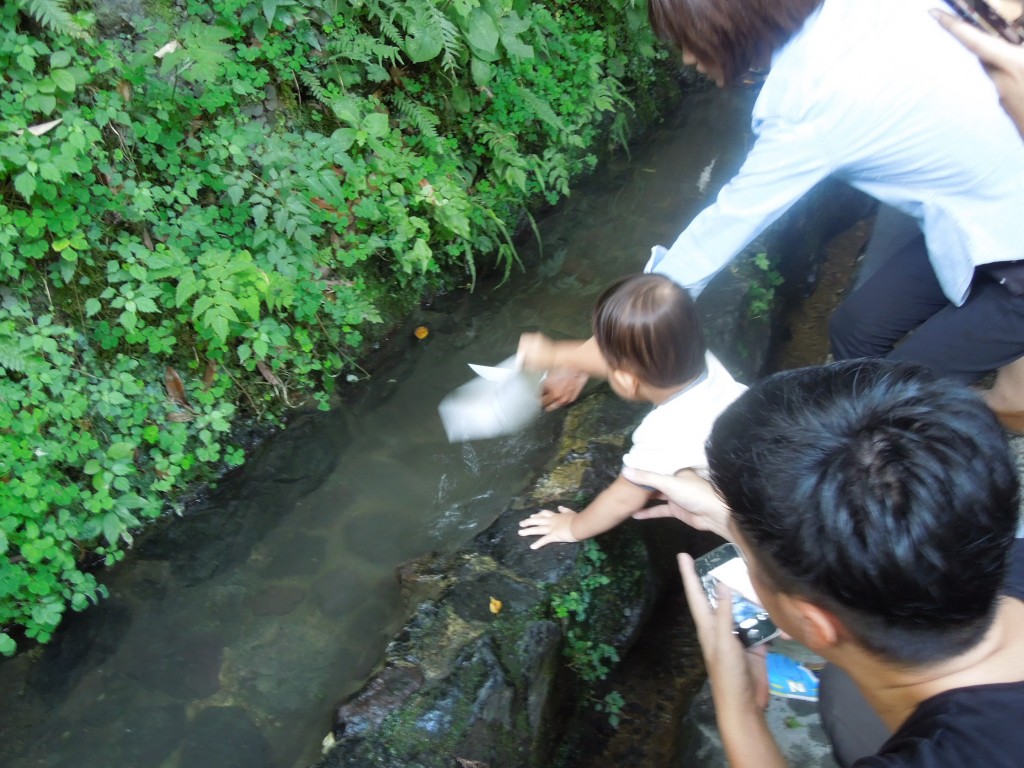
A baby tries its luck with floating his paper fortune slip
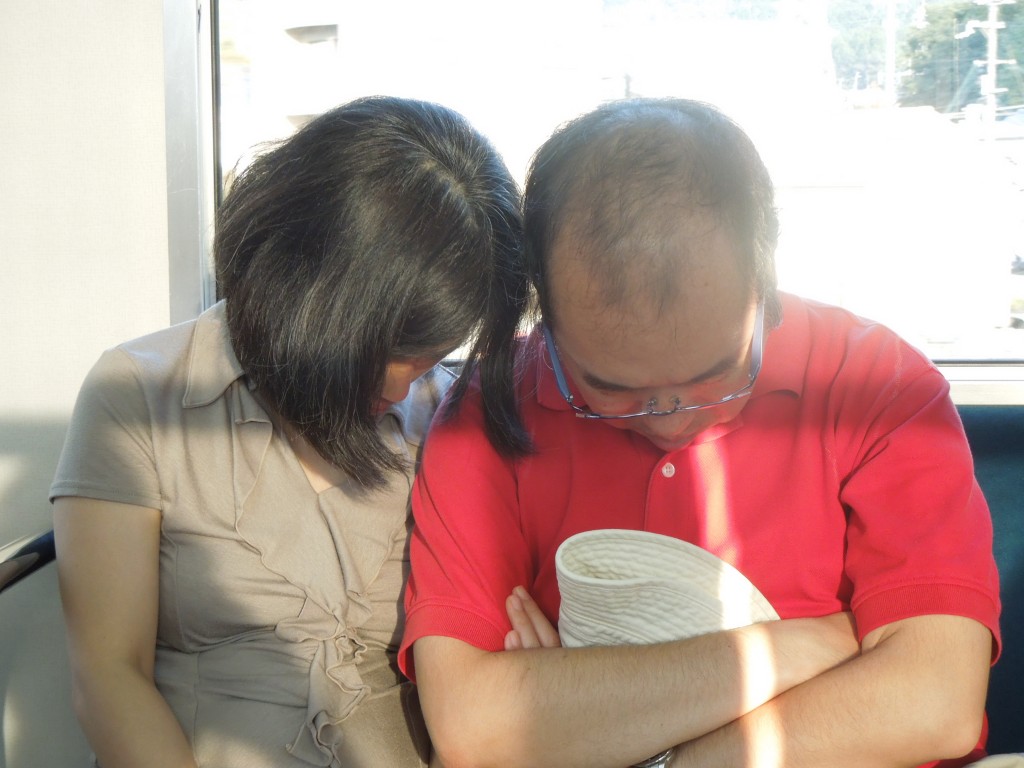
Walking from Kurama to Kibune, taking in all the sights and the wonderful nature, can be exhausting!

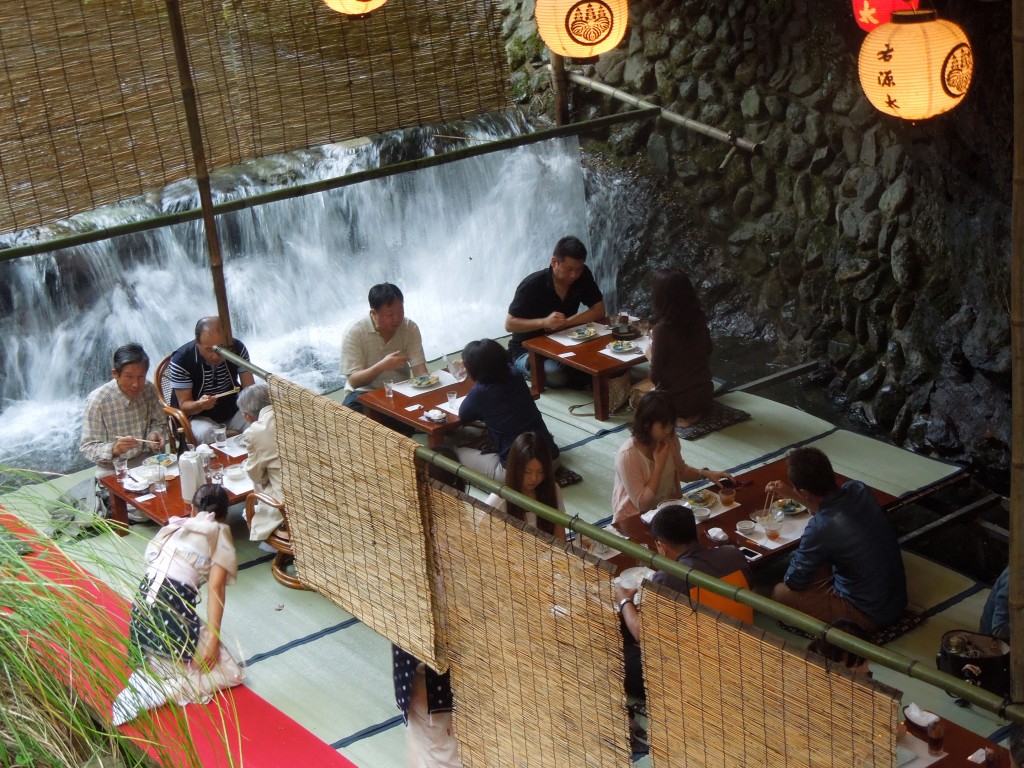
Great post John. Kibune always comes to mind during the hot summer. I can confirm that Kibune Shrine certainly has power with finding good enmusubi. One very hot summer, about 6 years ago, I went to Kibune with some students and enjoyed a wonderful lunch along the cool river. Afterwards I went and floated a fortune paper in the water and in the very next month, I met my future wife. I give all credit to the kami of Kibune. Is the Tamayorihime no mikoto related to the one who found the red arrow along the Kamo River and is the primary goddess of Shimogamo? That would strongly connect Kibune to the Kamo shrines.
Hi Paul… thanks for the testimony to the power of the Kifune enmusubi. And congratulations on your child, which is proof positive indeed of the effectiveness. As for the Tamayorihime of Shimogamo, there’s no connection. Tamayori means ‘spirit calling’ and was a term given to shamaness figures,
so Princess Tamayori was more a title than the name of an individual… a bit like Merlin or Christ. It’s said that the Kibune Tamayorihime was the mother of Emperor Jimmu, but since he’s probably a mythical figure that has to be taken with a pinch of salt…